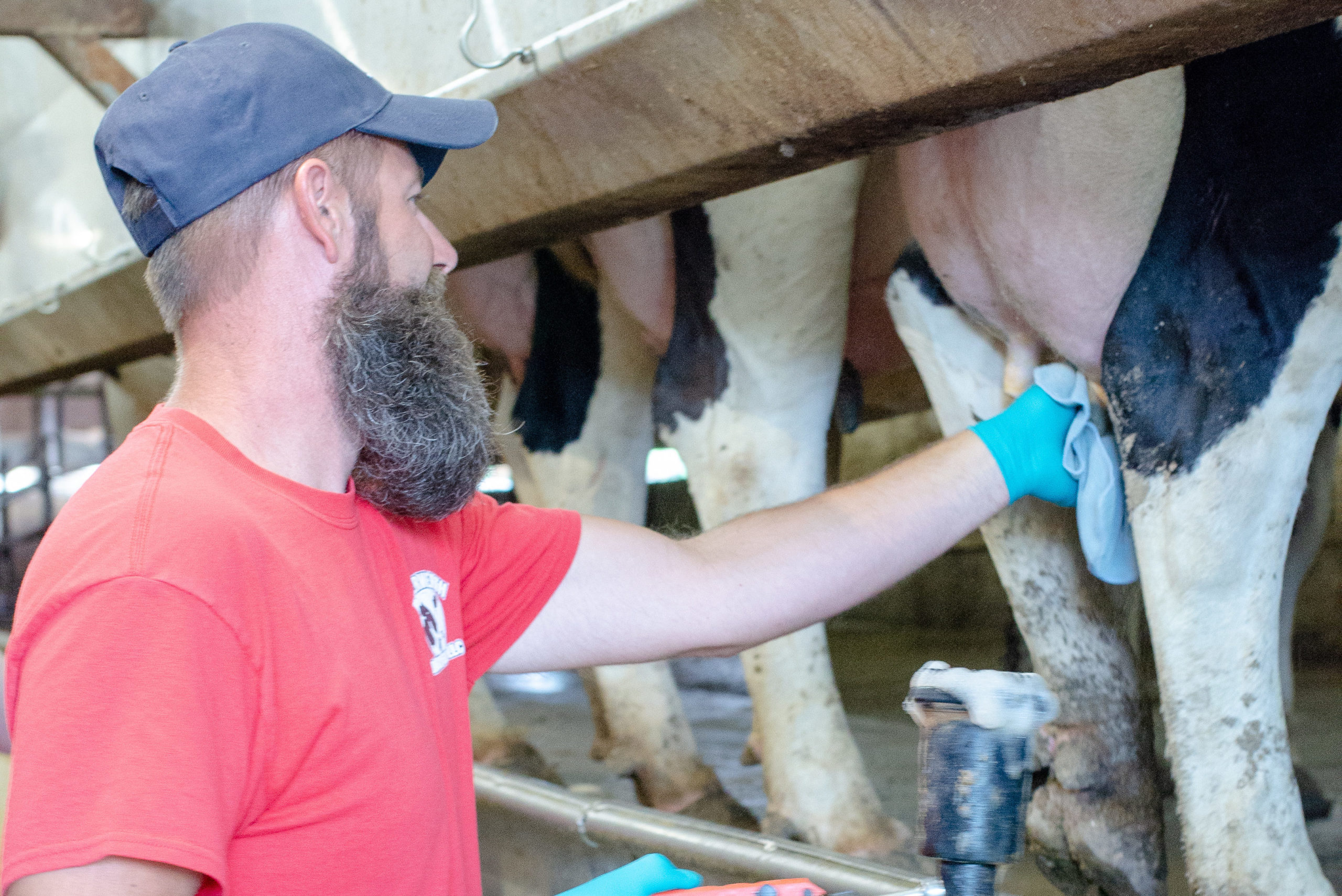The definition of “high milk quality” and standards for acceptable udder health are continuously becoming more rigorous and dairy producers who wish to remain competitive must meet or exceed these evolving standards. Dr. Pamela Ruegg, a professor and extension milk quality specialist from the the University of Wisconsin shared her expertise on excelling in milk quality at the recent Great Lakes Regional Dairy Conference in Frankenmuth, Michigan.
“Producing high quality milk is absolutely required to market milk globally,” Dr. Ruegg emphatically stated. The U.S. Dairy industry is increasingly dependent on exports. “The dynamics of our industry has changed remarkably, we went from almost no dependence on export to a stable fourteen percent of all the U.S. dairy products moving outside the U.S.” She continued, “And most of that is moving to Mexico.”
Because of this increase in exports, the criteria for acceptable milk quality has been set by the export requirement of less than 400,000 Somatic Cell Count (SCC). Dr. Ruegg reminisced that in 1984 when she was in a private veterinary practice the legal SCC limit was 1.5 million.
She remarked, “That’s the change that has happened in the length of my career, and in 2015 less than three percent of the U.S. milk did not meet the export quality standards.” She continued, “In order to maintain the competitiveness of our farms, we have had to adapt and we have.”
The national SCC trend has been consistent at about 200,000 while Michigan is slightly lower at about 158,000. Ruegg made the point that while a low bulk tank cell count is a result of improved milking management and culling of chronic cows, there is a higher rate of clinical mastitis. And that is a much more complex problem to address.
“The high clinical case rate is a consequence of more intense management.” Ruegg mentioned higher yielding cows in freestall barns with bedding that supports bacterial growth and exposure to environmental pathogens are also common causes of a higher rate of clinical mastitis cases. “We need to keep bacteria away from teats.” Ruegg continued, “Minimizing mastitis is never the result of a single decision but is the cumulative result of many decisions.”
Production of high quality milk is based on good management of cows, people and environment. Several Wisconsin farms enrolled in a survey that followed the result of using six management practices that were aimed at raising milk quality. The six management practices were: use of automatic take-offs, removal of udder hair, complete milking routine, always wearing gloves, keeping of mastitis records and use of the CMT. Ruegg reported that in every instance, the herds producing higher quality milk had higher adoption of every one of these practices.
Ruegg has developed her top five actions at excelling at udder health.
First Action:
To cull chronically infected cows. This would include all cows diagnosed with mycoplasma bovis infection or with chronic staph aureus infections, cows with multiple quarters affected by mastitis, cows with more than two clinical cases in one lactation and cows that maintain high SCC over two lactations.
Second Action:
To reduce bacterial exposure of teats of high risk cows. “Choice of bedding has an enormous influence on milk quality,” Ruegg pointed out. While sand is a popular option, many dairies are moving toward manure solids to manage the environmental restrictions. She commented on a study of 325 herds in Wisconsin using sand, mattresses or recycled manure products. The study revealed that herds using sand had much less mastitis and produced more milk. Bedding should be more than seventy-five percent dry matter and cows should not be calving in areas that you would not feel comfortable lying down.
The Third Action:
To develop and keep a professional work force. While it may sound simple, a vital truth is that people who work with cows should be people who like cows. Most welfare issues have been the result of poorly trained workers who are insufficiently managed, don’t have appropriate tools and should have never been hired. Ruegg maintains that training the work force and having a routine milking time will yield a lower rate of clinical mastitis.
The Fourth Action:
Use antibiotics only on cows that will benefit. Only about 40-50 percent of the clinical cases of mastitis will benefit from use of antibiotics.
The Fifth Action:
To think about eating lamb chops. Ruegg commented, “We need to look at every management practice like you are about to eat a lamb chop.” Sharing the story of when her son first realized lamb chops came from young lambs, Ruegg said we need to keep in mind what the consumer is thinking and make sure we are confident that we can defend all of our management practices to the public. She offered a list of considerations including; Are our animals free of pain? Are they free of fear? Do they have sufficient dry resting space? Do they have good quality of life? And are producers comfortable explaining to a non-ag friend why we do what we do?
Ruegg concluded, “Producing high quality milk is only going to be more important in the future, it’s the cost of maintaining market access.”
–Melissa Hart
This article was originally published in the March 2017 issue of the Michigan Milk Messenger.

